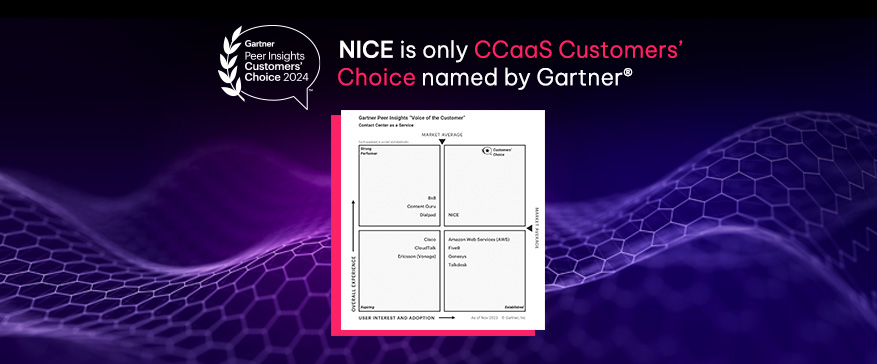What is CX Analytics?
Customer Experience Analytics, commonly known as CX Analytics, is a robust tool that provides deep insights into customer behavior and preferences. It involves collecting data from various channels and touchpoints to provide a comprehensive view of customer interactions, behaviors, and satisfaction through customer analytics. Through advanced technologies and methodologies, CX Analytics enables businesses to measure customer satisfaction, identify pain points, and uncover opportunities for improvement.
In this article, we will delve into the significance of CX Analytics and how it can help businesses maximize their return on investment (ROI) and customer satisfaction. We will also discuss best practices for implementing CX Analytics and ensuring data privacy and compliance.
Understanding the Importance of Customer Experience Analytics
In today’s competitive business environment, understanding and improving the customer experience is critical for any organization’s success. CX Analytics is one of the most effective methods to gain insights into customer behavior and preferences.
So, why should businesses prioritize CX Analytics? Here are some key reasons:
1. Enhanced Decision-making: CX Analytics provides valuable data and metrics that help businesses make informed decisions. By analyzing customer interactions, feedback, and purchasing patterns, companies can identify areas for improvement and make data-driven decisions to enhance their products, services, and overall customer experience.
2. Improved Customer Satisfaction: CX Analytics allows businesses to gain a deeper understanding of their customers’ needs and preferences. By identifying pain points and areas of dissatisfaction, organizations can make necessary changes to address these issues, leading to increased customer satisfaction and loyalty. Additionally, using data to forecast and prevent customer churn helps in maintaining a loyal customer base.
3. Competitive Advantage: In today’s competitive market, providing an exceptional customer experience sets businesses apart from their competitors. By leveraging CX Analytics, companies can gain insights into customer behavior, preferences, and market trends, enabling them to develop innovative strategies and stay ahead in the market.
Now, let’s discuss some of the benefits of CX Analytics in more detail:
1. Actionable Insights: CX Analytics provides businesses with actionable insights that can drive improvements in various aspects of their operations. By analyzing customer data, companies can identify trends, patterns, and opportunities to optimize processes, increase efficiency, and deliver a better customer experience. Analyzing customer effort score and other engagement metrics can help improve customer engagement.
2. Personalized Experiences: CX Analytics enables businesses to personalize their interactions with customers. By understanding individual preferences, purchasing behaviors, and past interactions, companies can tailor their offerings, marketing messages, and support to meet the specific needs of each customer.
3. Predictive Analytics: CX Analytics leverages predictive modeling techniques to forecast customer behavior and preferences. By analyzing historical data, businesses can anticipate future trends and make proactive decisions to meet customer demands and expectations.
4. Key Metrics: Tracking customer lifetime value (CLV) as a shared metric is especially useful for multiple teams, particularly marketers. Understanding CLV helps in identifying high-value customers and targeting the right kind of customers for long-term revenue generation.
By utilizing CX Analytics, businesses can significantly improve the customer experience. From better decision-making and increased customer satisfaction to gaining a competitive edge, CX Analytics has become an indispensable tool for organizations striving to provide exceptional customer experiences.
Measuring Customer Experience
Measuring customer experience is crucial for businesses aiming to improve their overall performance and meet customer expectations. By analyzing customer interactions and feedback, companies can gain valuable insights into what drives customer satisfaction and loyalty. In this section, we will explore key metrics for measuring customer experience, methods for conducting customer experience analysis, and the best tools for CX Analytics.
Key metrics play a vital role in understanding and evaluating customer experience. These metrics provide quantitative data that helps businesses gauge their performance and identify areas for improvement. Some of the common key metrics include Net Promoter Score (NPS), Customer Satisfaction Score (CSAT), Customer Effort Score (CES), and Customer Lifetime Value (CLV). By tracking these metrics over time, businesses can monitor customer sentiment and make informed decisions to enhance their overall customer experience.
When it comes to conducting customer experience analysis, businesses can employ various methods to gather and analyze data. Surveys, interviews, focus groups, and social media listening are some of the popular methods used to collect customer feedback. Additionally, businesses can leverage data analytics tools to analyze customer interactions, such as website clicks, customer support calls, and purchase history. These methods help businesses gain a comprehensive understanding of customer preferences, pain points, and expectations. Using customer insights to understand customer behavior, preferences, and perceptions allows businesses to tailor products, services, and marketing efforts effectively.
To effectively analyze customer experience data, businesses can leverage advanced CX Analytics tools. These tools provide actionable insights by processing and interpreting large volumes of customer data. Some of the best tools for CX Analytics include Nice CXone, which offers a comprehensive suite of analytics features, including sentiment analysis, text analytics, and predictive analytics. With the help of these tools, businesses can uncover patterns, trends, and correlations within customer data, enabling them to make data-driven decisions and improve their overall customer experience.
Utilizing Customer Data for Insights
Utilizing customer data is essential for businesses looking to improve their customer experience (CX) and drive growth. By leveraging customer data, companies can gain valuable insights that help them understand their customers better and make data-driven decisions to enhance their CX strategies.
One effective way to unify customer data is by utilizing a Customer Data Platform (CDP). A CDP allows businesses to collect, organize, and analyze customer data from various sources, such as websites, mobile apps, and customer support interactions. By consolidating all this data onto a single platform, businesses can get a comprehensive view of their customers’ behaviors, preferences, and interactions across multiple touchpoints. Understanding and improving the customer journey through a CDP can help build customer loyalty.
Spotting trends and gaining valuable insights from customer data is another crucial aspect of CX Analytics. By analyzing patterns and trends within the data, businesses can identify emerging customer behaviors, preferences, and pain points. This information can be used to optimize products, services, and marketing strategies to better meet customer needs. Using historical data for predictive analytics can help retain more customers over time.
Customer journey analytics is a powerful tool for enhancing CX. It involves tracking and analyzing customer interactions and touchpoints throughout their journey with a business. By mapping out the customer journey and analyzing the data, businesses can identify areas of friction, optimize touchpoints, and personalize the customer experience. This leads to improved customer satisfaction, loyalty, and ultimately, business growth.
Maximizing ROI and Customer Satisfaction
Maximizing ROI through effective CX Analytics involves a strategic approach to understanding customer data and making informed decisions. By analyzing customer interactions and feedback, businesses can identify key drivers of customer satisfaction and loyalty, leading to increased revenue and reduced churn.
Improving customer satisfaction with CX Analytics is about more than just addressing pain points; it’s about anticipating customer needs and exceeding their expectations. By leveraging predictive analytics, businesses can forecast customer behavior and preferences, allowing them to tailor their offerings and enhance the overall customer experience.
Active management of customer relationships using CX Analytics involves continuously monitoring and analyzing customer interactions to ensure a high level of satisfaction. Understanding and analyzing the entire customer journey is crucial to improving customer experience. By staying attuned to customer feedback and making data-driven adjustments, businesses can foster long-term loyalty and drive sustainable growth.
Implementing CX Analytics: Best Practices
Implementing CX Analytics is crucial for businesses looking to enhance their customer experience and drive growth. By analyzing customer data, businesses can gain valuable insights into their customers' behavior, preferences, and needs. In this section, we will explore the key elements of the customer experience model, choosing the right touchpoints for analysis, and provide tips for successful CX Analytics implementation.
The customer experience model consists of various elements that contribute to the overall customer journey. These elements include pre-purchase touchpoints (such as advertisements and social media), the purchase process itself, and post-purchase touchpoints (such as customer support and follow-up emails). By understanding and analyzing each touchpoint, businesses can identify areas for improvement and deliver a seamless customer experience.
When implementing CX Analytics, it is essential to choose the right touchpoints for analysis. Focus on touchpoints that have a significant impact on customer satisfaction and loyalty. For example, analyzing customer interactions on your website, mobile app, or social media platforms can provide valuable insights into customer preferences and pain points. By focusing on the most relevant touchpoints, businesses can allocate their resources effectively and make data-driven improvements.
To ensure a successful CX Analytics implementation, consider the following tips:
- Define clear objectives: Clearly define what you want to achieve with CX Analytics. Whether it's improving customer satisfaction, increasing sales, or reducing churn, having specific goals will guide your analysis and decision-making process.
- Collect the right data: Identify the data points that are most relevant to your objectives. This may include customer demographics, purchase history, website interactions, or customer feedback. Collecting and analyzing the right data will provide actionable insights.
- Invest in technology: Implementing CX Analytics requires the right tools and technology. Invest in a robust analytics platform that can handle large volumes of data and provide advanced analytics capabilities.
- Involve stakeholders: CX Analytics is not just an IT or marketing function. Involve stakeholders from different departments, such as customer support and product development, to gain a holistic understanding of the customer journey and drive cross-functional improvements.
By implementing CX Analytics best practices, businesses can gain a competitive edge by delivering exceptional customer experiences. Start by understanding the key elements of the customer experience model, choosing the right touchpoints for analysis, and following the tips mentioned above. With the right insights and actions, businesses can optimize their customer experience and achieve long-term success.
Ensuring Data Privacy and Compliance
Privacy considerations play a crucial role in the field of CX Analytics. As businesses collect and analyze customer data to improve their customer experience, it is essential to prioritize data privacy and protect sensitive information.
One effective way to address privacy concerns in CX Analytics is by implementing a privacy preference center. This allows customers to have control over their personal data and choose the type of information they are comfortable sharing. By providing customers with this option, businesses can build trust and enhance their reputation.
Compliance with data protection regulations is another vital aspect of ensuring data privacy in CX Analytics. Organizations must adhere to relevant laws and regulations, such as the General Data Protection Regulation (GDPR) in the European Union or the California Consumer Privacy Act (CCPA) in the United States. These regulations establish guidelines for the collection, storage, and usage of customer data, ensuring that businesses handle data responsibly and transparently.
At NICE, we understand the importance of data privacy and compliance in CX Analytics. Our solutions are designed to meet the highest privacy standards, allowing businesses to leverage customer data while safeguarding their privacy rights. With our advanced analytics tools, businesses can gain valuable insights into customer behavior without compromising data security.







